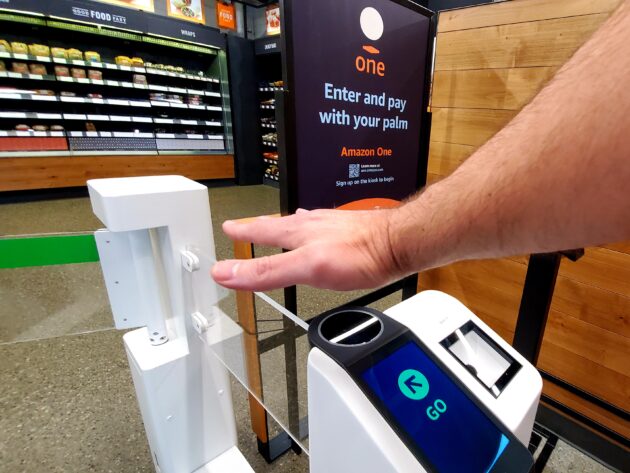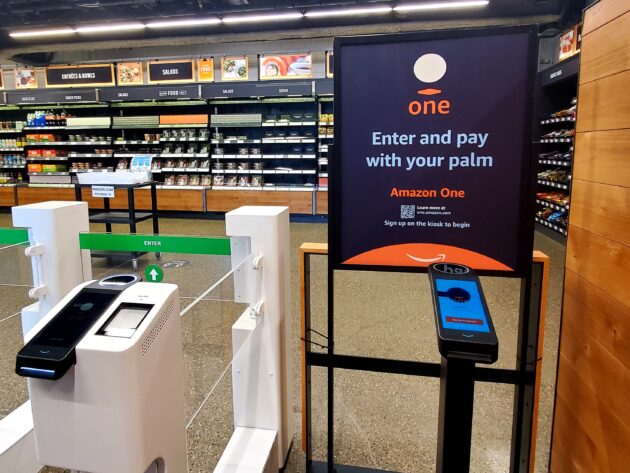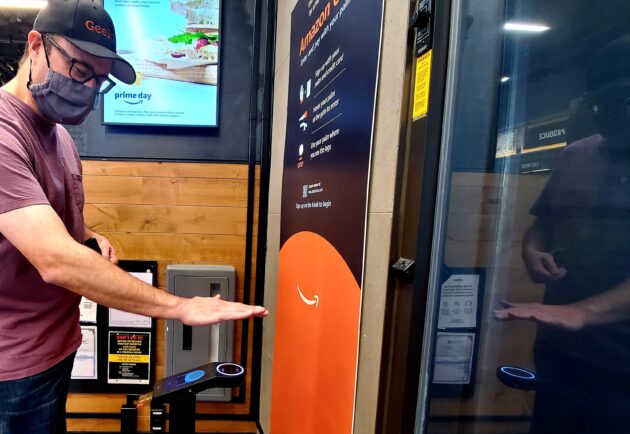Hamartia Antidote
ELITE MEMBER

- Joined
- Nov 17, 2013
- Messages
- 35,188
- Reaction score
- 30
- Country
- Location

Our first-hand experience with Amazon’s new palm reader, and what it says about the future of retail
What if grabbing a drink from the store was as easy as getting one from your fridge? Amazon is approaching that level of frictionless commerce with its

What if grabbing a drink from the store was as easy as getting one from your fridge?
Amazon is approaching that level of frictionless commerce with its new Amazon One palm-reading biometric identification system, especially when combined with its existing checkout-free retail infrastructure. Convenience for consumers means more cash in Amazon’s account, and for better or worse, this one-two technological punch could help the tech giant put more shoppers in the palm of its hands.
Those are some of my takeaways after experiencing the technology at one of the two Amazon Go convenience stores where it debuted Tuesday in Seattle.
Without pulling anything from my pocket to identify myself or pay — no need to unlock a smartphone, or fish a credit card from a wallet — going from storefront to shelf to sidewalk easily took less than a minute. I’m sure it could have been less than 15 seconds if I hadn’t juggled my phone in one hand to get the picture above, or chatted up the security guard to let him know why I was taking a picture, or deliberated over which flavor of sparkling water to buy.

The launch of Amazon One is notable in part because of the company’s broader ambitions for the technology. Amazon is introducing the palm reader technology for sign-in at Amazon Go, as an alternative to using a QR code on a phone, but it envisions broad adoption in the long run, for everything from in-store payments to accessing office buildings to entering sports stadiums (whenever we’re able to do that again someday).
Amazon is also in talks with other companies to adopt the technology on their own.
Of course, this raises all sorts of questions about privacy, as detailed in our coverage this week. Amazon offers a long list of assurances about the security of the data. The company is encrypting the palm scans in the cloud, rather than keeping it on the scanning device, and promising people who sign up that they can delete their data from the cloud whenever they want. But the system promises to serve as an interesting test of the level of consumer trust in Amazon.

I decided to set any such qualms aside to experience Amazon’s vision for the future of true grab-and-go shopping.
To fully experience the system, I actually visited twice. On the first visit, I registered for Amazon One at one of two small kiosks, placing each palm above the sensor in succession to create what Amazon describes as an encrypted “palm signature” representing my unique biometric characteristics. The sign-up process requires inserting a credit card and entering a mobile number. The company says an Amazon account isn’t required to create an Amazon One account, but I went ahead and linked the two accounts as part of the process, to be able to see my Amazon One purchases in my Amazon account.
Pay with your palm? Amazon unveils biometric ID, touting convenience and testing customer trust
During both the registration process and the subsequent entry to the store, the display on the palm reader shows a small puck in a circle that moves and changes in size to indicate whether you’re positioning your palm correctly in both horizontal and vertical planes. When the puck is centered and in the circle, it locks on and reads your palm.
Registration took less than a minute, as Amazon promised, and the gateway recognized my palm almost instantaneously, letting me into the store.
My second visit, when I was already registered, was when the true speed and convenience of the setup hit home. Sure, go ahead and make fun of the person who wants to shave seconds off a visit to the store, but how many cumulative hours of our lives have been wasted while the person in front of us struggles with a PIN code, or tries three times to get the terminal to connect with their phone for wireless payment?
Given the state of the family refrigerator sometimes, if there were a convenience store with this technology close to my house, it could actually be faster to retrieve an item from one of its shelves than to find it on one of ours.
Amazon One is currently available at two Amazon Go convenience stores in Seattle, at 7th Avenue and Blanchard Street, and 300 Boren Ave. N.
Last edited:



